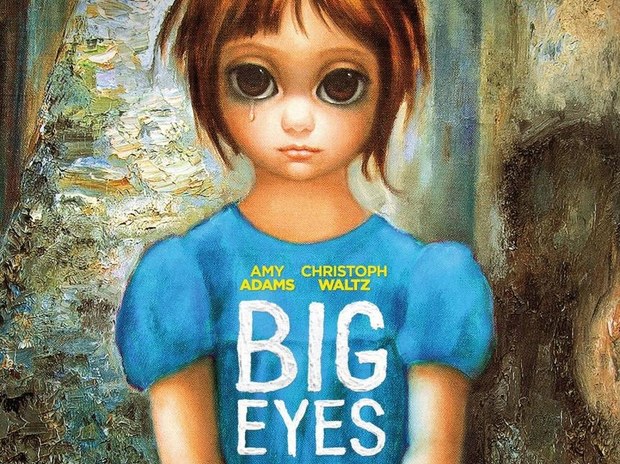"Keane sells paintings, then he sells pictures of the paintings, then he sells postcards of pictures of the paintings."
Though he’s developed a knack for gothic movies with Batman
and Beetlejuice, and then bad remakes with Planet of the Apes and Alice in
Wonderland, Tim Burton at his prime had a knack for displaying intimate human
emotions in their most bizarre and innocent forms. So this return to his
origins, swapping Johnny Depp and Helena Bonham Carter for newer models, shows
extreme promise.
Already enduring one failed marriage, artist Margaret
Ulbrich (Amy Adams) appears to have found happiness as she meets and marries
fellow artist Walter Keane (Christoph Waltz) and her paintings of wide eyed figures
become popular and bring in money. But she discovers that hubbie has been taking
the credit for her work.
Immediately there is a sense of breaking away as far as
directorial choices go, Burton chooses to take up a lighter look of the film, straying
away from the dark, goth’s fantasy, style. The only Burton film that comes
close to this in terms of story is Ed Wood, but that was still dark, literally
as it was black and white. Big Eyes is much more colourful and captures the
tone of its artistic background quite successfully.
The story itself seems to match Burton as a director, some
of his films can be described as art, but then again he clearly has no trouble
with mass producing his art, just look at Jack Skellington. The Keane portraits
were produced as pictures and prints and it was disputed whether or not
something mass produced can be considered true talent, an argument that we’ve
seen in Birdman previously.
The two leads both make an impression, particularly Waltz.
However this can have repercussions, like all of his roles he’s a charismatic,
larger than life character who can be seen lying and cheating his way to the
top. That works very well at some points such as drawing the audience and Adams
in to his web but at others I felt as if the charisma needed to be pushed aside
in order to make way for more human drama. On that basis, the better
performance seems to come from Adams, a more ordinary yet more human portrayal
of a woman who must choose between blissful suppression or dangerous
recognition. The performances also seem to be influenced by the writing mainly,
so given a screenplay that examines their relationship on a closer level, Waltz
could really deliver, but sadly we just do not see it here.
Though this entire situation is abuse at the end of the day,
a man suppressing his wife in order to support his own ego, but it tries to maintain
a light tone for more time than necessary. The result is a rather mixed tone
and one that seems distorted, we see Amy Adam’s cracking psyche and Waltz’s abusive
personality, some caricatures of the art world with other characters, they don’t
fit together that well.
But there is a nice personal tone to the story. It reflects
Margaret’s own personal struggle as she must draw upon her own inner strength
in order to stand up against her husband. The way that these paintings begin to
dominate her life and personality, so much so that she begins to see the big eyes
in ordinary people and herself, some impressive yet also subtle CGI.
Big Eyes is part biopic, part romance, part portrayal of
marriage and art in the 1950s and part period drama. Though all of the fighting
tones can make it feel mismatched, it’s a charming film and undoubtedly Burton’s
best for a long time.
Result: 7/10

No comments:
Post a Comment